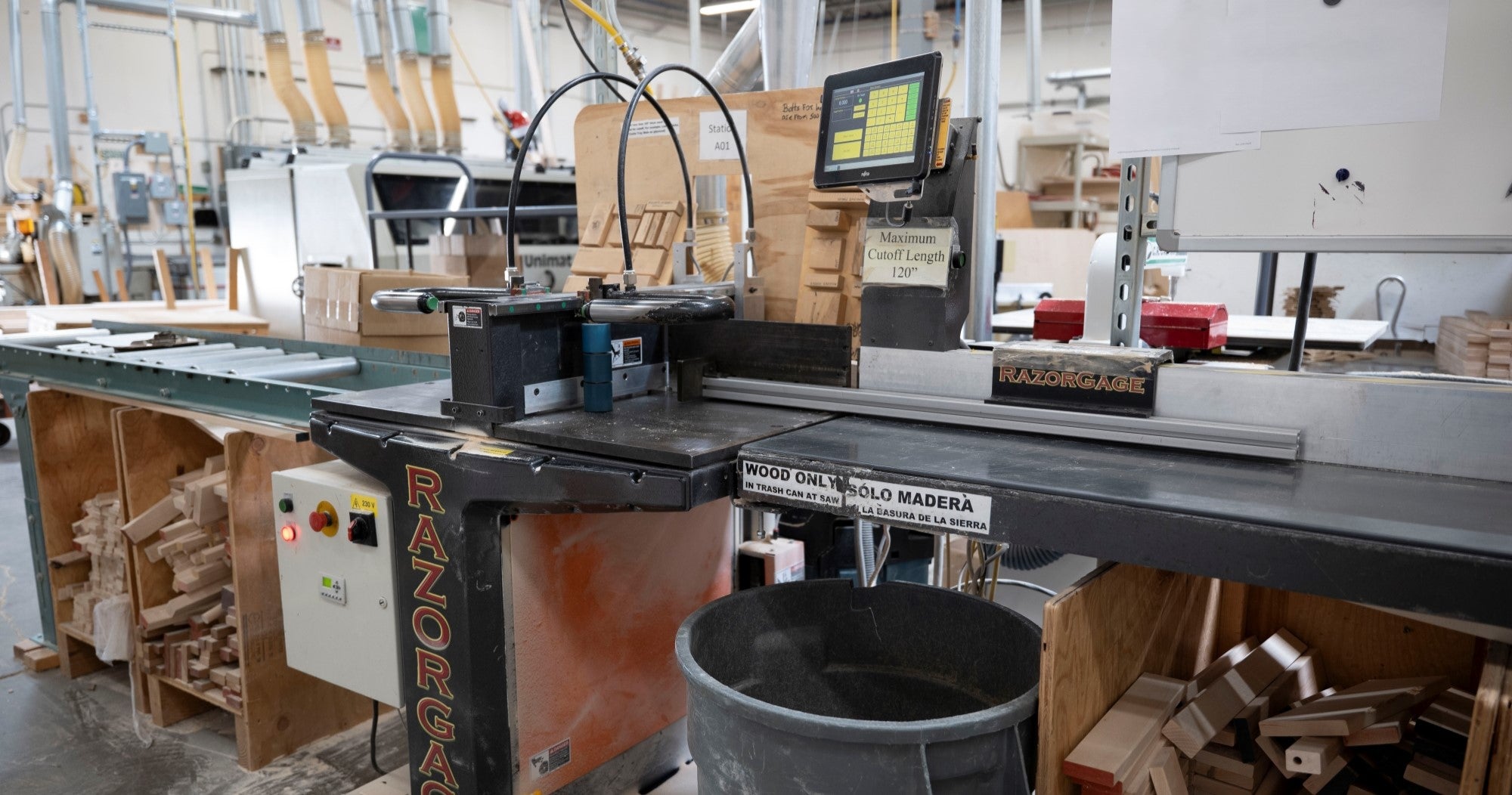By Cindy Lair

In the third installment of this series, we come to the process of cutting a board based on the information the board is exhibiting. This is a specific process of reading the surface of the board. The board could have a clear or flawed surface. It could also be straight or warped (having a bend) from slight to severe. It could also have wind, or twist. The board could be clear in color or have sap that has collected near a hole tapped for maple sugar. Cut off also requires knowing the length the part blank needs to be, quality required, the number needed, and how to judge each in an efficient manner—an important task that requires good eyesight and product knowledge.
The process is something like this: hold the board up, look for any obvious flaws, place the board in the saw, make a trim cut to the end of the board. Decide the longest possible cut. Make the cut. Reassess for the next cut, repeat until the board is gone.
In addition to this complicated process, we should discuss our desire to consistently keep up our efficiency, productivity, and the effective use of resources by reviewing a little history. Years ago, when I started at Schacht, we processed every piece of millwork from the S25 (surfaced two sides) lumber we brought in. Two significant changes occurred that are extremely important to our efficiency over the years.
As the company grew, the workload for cut off became enormous. Harness wood alone required 17,000 lineal feet every four weeks to keep up. If we lined the wood up end to end, this would be nearly three and a quarter miles. This is only one size of the one hundred and six sizes of hard maple we use.
Consequently, we struck a deal with a dowel maker. We would use their off fall or waste wood instead of it going to the landfill. Do not misunderstand. This is perfectly good wood that is just too small to become a dowel. The company would process the wood to size and length, and ship it to us—an efficient and cost-effective way to save resources for both companies and the environment. We have expanded the sizes we buy so as to spend less time ripping and moulding, both processes which require specialized skills that are difficult to come by in the current labor market.

The second significant factor during this time is purchasing CNC machines (computer numerical controlled) to make many of our parts. We could not process wood fast enough to keep these machines busy without our arrangement with the dowel maker. The speed and accuracy of the CNC forces a change in the machinery need to accomplish cut off. Originally, we had an industrial cut-off saw, but it was not accurate enough for the CNC machines which allow only a ten thousands’ variability. We now have a CNC cut-off saw. The out-feed table has a sliding stop controlled by pre-programmed buttons on a screen, which is simply touched, allowing the stop to locate itself. This eliminated the time-consuming process of hand setting the stops and is extremely accurate.
Once parts are cut, they are scheduled for either the CNC or hand operations.

